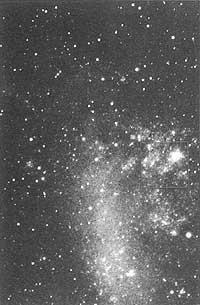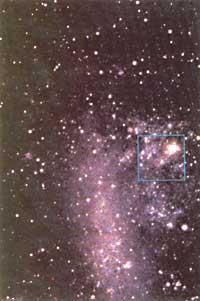1987th on the birthday of the supernova
1988/06/01 Arregi Bengoa, Jesus Iturria: Elhuyar aldizkaria
Last February was the year in which the supernova SN1987 A was first seen. Much has been said about the importance of this phenomenon and what could help to know the last steps of the evolution of stars. M. Balcels told us the conclusions of the first observations in the August issue last year. He also mentioned some inexpressive problems. Next, we will try to make known the fruits that this year of observation has given, presenting the hypotheses that have been completed for the problems that then had not been clarified.
According to the article mentioned, supernovae have been classified into two groups since their existence was known. Each type is a consequence of a totally different star explosion process. Those of class I, the ancient stars are formed in binary systems where they abound and in the spectrum do not exhibit traces of hydrogen. Class II is produced in the red supergiants of the young star zones and hydrogen lines are evident in the spectrum.

As is known, in our galaxy there are no supernovae (at least visible) XVII. Since the beginning of the 20th century. The classification has been carried out by analyzing the emission of supernovae detected in other galaxies, that is, the separation is done from the spectrum. Once the type of SN1978 A was delimited, it was thought that its relative proximity would allow delimiting the stars by which it originated and that with this data we could confirm the hypothesis of the explanation of the origin. But it was not easy to define what kind of stars originated in the beginning. The announcement could not be fulfilled from the beginning.
M. Balcels claimed that the supernova was considered type II, but its spectrum presents significant differences with respect to the spectral model of this group. On the other hand, the identification was also not easy, since by decreasing the brightness of the first days it was found that the star that supposedly needed to burst was still in the first place. Today we can affirm what later began to be assumed: the star that exploded was Sanduleak -69°202. It seems that where it was previously considered that there were two stars there were also three. The closest is the one that exploded. The Sandule -69°202 B3 is a blue supergiant of spectral type. Therefore, the temperature of the top layer is quite high: About 18,000 K (three times the Sun).
These differences make their brightness 100,000 times higher than that of the Sun. By comparison, the diameter is approximately 50 times larger and the mass 20 times larger. The distance could be delimited quite precisely in about 170,000 light years. This means that the explosion occurred 170,000 years ago, when the light has taken those years to reach us. But all this data we are giving contradicts us: If SN1987 A II should be a red and not blue supergiant. Will there be a solution to the problem? or will we have to renew the theory completely?
It seems that at the moment the two models we have to explain the explosions of the stars are suitable. Perhaps the classification we make according to spectra is what we must use carefully. This classification was initially based on supernovae observed in other galaxies. This greatly limits the study, for example, the only supernovae that have surely been seen are those of greater clarity. To reinforce this vision, it can be said that in recent years great efforts are being made to explain the anomalies presented by some supernovae discovered 25 years ago and in 1983 and 1984.
We will not begin now to clear these special cases, but it should be made clear that, although the processes that occur in the star area are known, the effects that may have to the outside depend much on the nature of the outer layers of the star. One explosion and another can give any kind of sprectro. This, of course, leaves the classification meaningless.
SN1987 A itself can also be an example of what was said in the previous paragraph, since it presents some particularities of type II. Perhaps the most important thing is the evolution of clarity. In general, the luminosity grows very fast, reaching the maximum in a few days. In the case of SN1987 A, however, the increase in intensity occurred very slowly, requiring more than three months to reach the maximum. The intensity of this point is much lower than that of conventional type II supernovae.
As we shall see, the explanation of these differences lies in the nature of the blue supergiant, but what we cannot explain will be the process of achieving that character. Red supergiants abound in the Great Cloud of Magellan, where this supernova has been observed. This suggests that the Sandule had lost -69°202, but for unknown reasons the outer layer of hydrogen. The solar wind has been mentioned as a possible reason, but considering the size of the star, it is not believed that it would have enough strength to push the mass away to that point. Regardless of the process, the hottest (i.e. bluer) layers inside are visible.
The star is thus left with a much smaller mass and volume. Consequently, during the explosion matter cannot become a radio sphere equal to that of the red supergiant. Since luminosity is a function of the emission surface, the intensity is also much lower. The energy released by the disintegration of the radioactive elements resulting from the blasting increases the heating of the external layers, progressively reaching the maximum intensity. Since in the case of a normal supernova the intensity after the explosion is so high, this second effect is much lower. It only affects the drop rate of intensity.
These are the answers that have been found to the important problems raised by SN1987 A.

Gai honi buruzko eduki gehiago
Elhuyarrek garatutako teknologia





